Increase customer trust with five easy steps

In the world of business, customer trust is an invaluable asset. It forms the foundation of successful and long-lasting relationships between businesses and their customers. When customers trust a company, they are more likely to make repeat purchases, provide positive reviews, and recommend the business to others. Trust also plays a crucial role in the decision-making process, as customers are more likely to choose a company they trust over competitors. Establishing and maintaining customer trust is thus essential for business growth and sustainability.
Security and compliance are key elements in building and maintaining customer trust. In an era marked by increasing concerns over data breaches, privacy violations, and cyber threats, customers are more vigilant than ever about the security of their personal information.
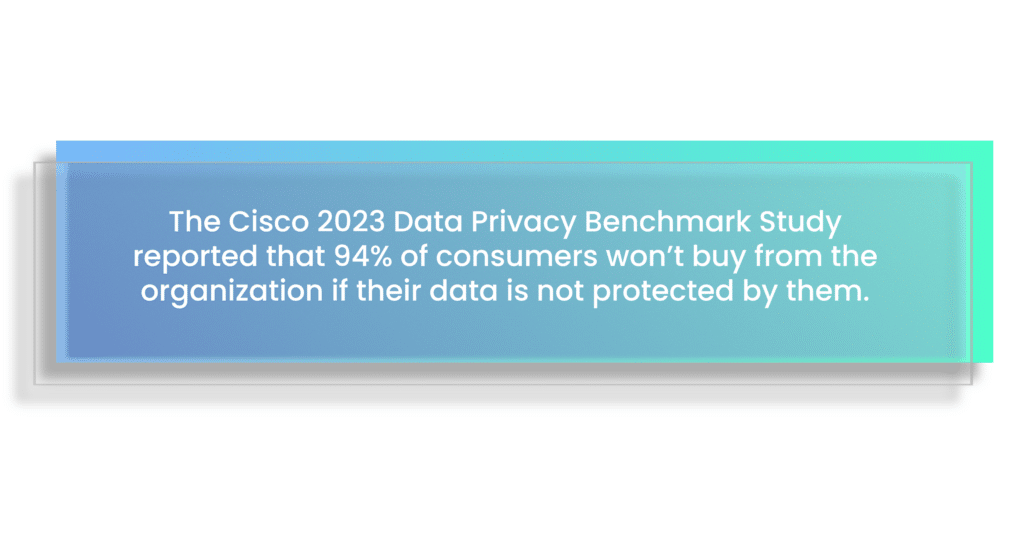
Businesses must demonstrate their commitment to protecting customer data and complying with relevant regulations, such as GDPR or HIPAA, depending on their industry. Failure to do so can lead to reputational damage and legal consequences that erode trust.

5 steps to increase customer trust
Organizations often ask, “How to build customer trust?” Well, it’s important to emphasize that building and maintaining customer trust is a multifaceted endeavor that requires careful planning and consistent effort. In an increasingly digital and interconnected world, where information travels swiftly, and consumer choices abound, establishing trust has become both a strategic imperative and a competitive advantage for businesses of all sizes and industries.
In this section, we will outline five easy steps that businesses can take to increase customer trust, which will not only contribute to their reputation but also foster stronger and more enduring relationships with their clientele. By embracing these principles, businesses can build a foundation of trust that leads to customer loyalty and long-term success.
Step 1: Understand the regulatory landscape
Compliance with industry regulations is a fundamental pillar of building and maintaining customer trust. It demonstrates a commitment to ethical and responsible business practices. When businesses adhere to the rules and standards set forth by regulatory authorities, they not only mitigate legal risks but also signal to customers that their interests and data security are a top priority. Compliance helps foster an environment of transparency and accountability, reassuring customers that the business is operating with their best interests in mind.
Identifying and understanding the key regulatory bodies and standards relevant to your specific industry is crucial. Different sectors have unique sets of regulations designed to address industry-specific challenges and protect consumers.
For instance, in the financial industry, organizations need to comply with regulations like the Sarbanes-Oxley Act (SOX) or the Payment Card Industry Data Security Standard (PCI DSS), whereas healthcare companies must adhere to the Health Insurance Portability and Accountability Act (HIPAA). Knowing these regulatory bodies and standards ensures that your business can tailor its compliance efforts accordingly, avoiding costly mistakes and ensuring customer data and interests are protected.

Non-compliance with industry regulations can have dire consequences for customer trust. It exposes customers to risks such as data breaches, privacy violations, and financial misconduct. When customers perceive that their personal information is not adequately protected or that a business is not operating within legal boundaries, their trust erodes rapidly. This erosion of trust can manifest as a loss of customers, negative publicity, legal penalties, and damage to the business’s reputation, all of which can be difficult to recover from.
In summary, understanding and adhering to industry regulations is a critical component of building and maintaining customer trust. It signals a commitment to ethical practices, protects customer interests, and mitigates the risks associated with non-compliance, ultimately strengthening the bond between a business and its clientele.
However, according to Harvey Jang, Vice President and Chief Privacy Officer Cisco, “When it comes to earning and building trust, compliance is not enough.”
Step 2: Implement robust data protection measures
Data security is the backbone of the process to increase customer trust. It underlines a business’s dedication to safeguarding sensitive information, and fostering an environment of confidence. When customers see that their personal data is handled with the utmost care and security, they are more likely to trust the business. Conversely, data breaches or lapses in security can severely erode trust, leading to reputational damage and loss of customer confidence.
To ensure robust data protection, businesses must employ a comprehensive strategy that includes encryption, stringent access controls, and proactive data breach prevention measures. Encryption secures data both in transit and at rest, while access controls restrict data access to authorized personnel only. Implementing effective data breach prevention strategies involves constant monitoring, intrusion detection systems, and incident response plans. These measures collectively create a strong defense against data breaches and reinforce trust in the eyes of customers.

Equally important is the need for employee training and awareness programs. Employees are often the first line of defense against data breaches, and their actions play a critical role in maintaining data security. Comprehensive training ensures that employees understand data protection best practices, recognize potential security threats, and know how to respond to security incidents. By investing in employee education and awareness, businesses can further solidify their commitment to data security and, consequently, customer trust.
Step 3: Conduct regular security audits and assessments
Proactive security auditing offers numerous benefits for organizations aiming to maintain robust data protection and increase customer trust. Firstly, it provides a systematic and objective evaluation of your security measures, helping to identify potential vulnerabilities and weaknesses before they can be exploited by malicious actors.
Additionally, regular audits demonstrate a commitment to security and compliance, reassuring customers and stakeholders that their data is being handled with care. Auditing also aids in the continuous improvement of security protocols, ensuring that your organization stays ahead of evolving threats and regulatory changes.
How to perform a comprehensive security assessment
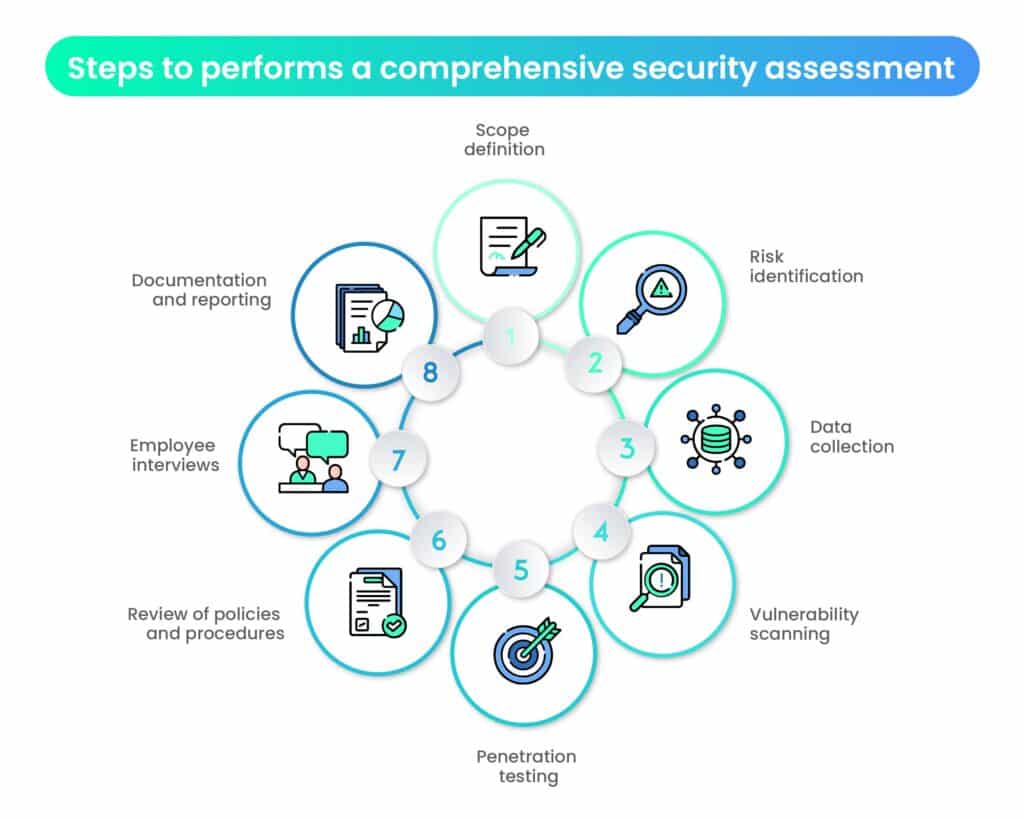
Performing a comprehensive security assessment involves several key steps:
- Scope definition: Clearly define the scope of the assessment, including the systems, processes, and data that will be evaluated. Consider the specific objectives and areas of concern.
- Risk identification: Identify potential security risks and threats, both internal and external, that could impact your organization’s data and operations. This may include malware, phishing attacks, insider threats, and more.
- Data collection: Gather relevant information, such as security policies, procedures, access logs, and configuration settings. This data will serve as the foundation for your assessment.
- Vulnerability scanning: Use vulnerability scanning tools to identify known vulnerabilities in your systems and networks. Regularly update and patch software to address these vulnerabilities.
- Penetration testing: Conduct penetration testing (ethical hacking) to simulate real-world attacks and assess your organization’s defenses. Identify weaknesses that could be exploited by malicious actors.
- Review of policies and procedures: Examine existing security policies and procedures to ensure they align with best practices and compliance requirements. Make necessary updates or improvements.
- Employee interviews: Interview employees to gauge their awareness of security protocols and their adherence to best practices. This can help identify areas where additional training may be required.
- Documentation and reporting: Document your findings, including vulnerabilities, weaknesses, and recommendations for improvement. Create a detailed report that outlines the assessment’s results.
Addressing vulnerabilities and weaknesses
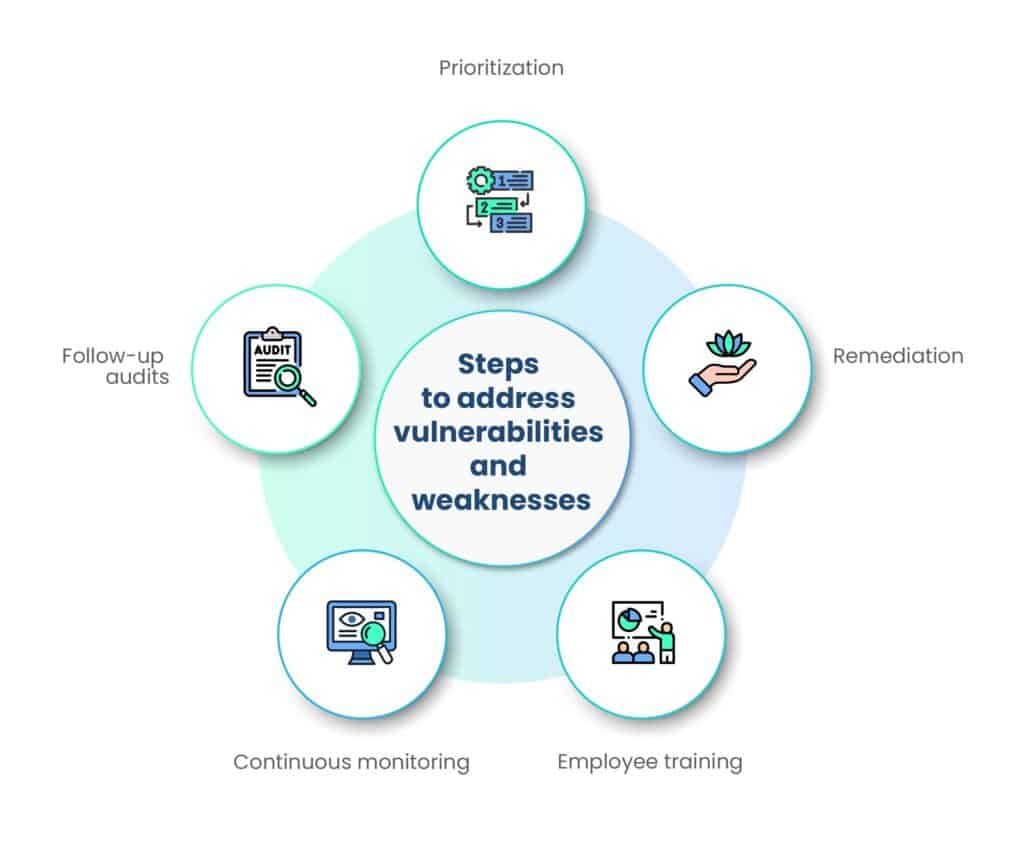
Once vulnerabilities and weaknesses are identified through the assessment, it’s essential to take prompt action to address them:
- Prioritization: Prioritize vulnerabilities based on their severity and potential impact on your organization. Focus on addressing the most critical issues first.
- Remediation: Develop and implement a plan to remediate identified vulnerabilities. This may involve software patching, configuration changes, or the implementation of additional security controls.
- Employee training: Provide additional training and awareness programs for employees to mitigate human-related vulnerabilities, such as social engineering attacks.
- Continuous monitoring: Implement continuous monitoring to detect and respond to emerging threats and vulnerabilities in real time.
- Follow-up audits: Schedule follow-up security audits to assess the effectiveness of remediation efforts and ensure that security improvements are maintained over time.
By regularly conducting security audits and assessments, organizations can proactively identify and mitigate security risks, bolster their data protection measures, and reinforce customer trust in their commitment to security and compliance.
Step 4: Transparent privacy policies and practices
Crafting clear and concise privacy policies is essential to increase customer trust. Privacy policies should be written in plain language that is easy for the average person to understand. They should clearly outline what data is collected, how it is used, who it is shared with, and how it is protected. Avoid legalese and jargon, and make sure that the policy is easily accessible on your website or app.

Transparency is key in the customer trust theory when it comes to data collection, storage, and usage. Customers want to know what information is being collected from them, why it’s being collected, and how it will be used. Be explicit about the types of data you collect, whether it’s personal information, browsing behavior, or location data. Explain the purposes for which you collect this data, such as to improve user experience or to personalize content. Additionally, clarify how long you will retain the data and how it will be securely stored.
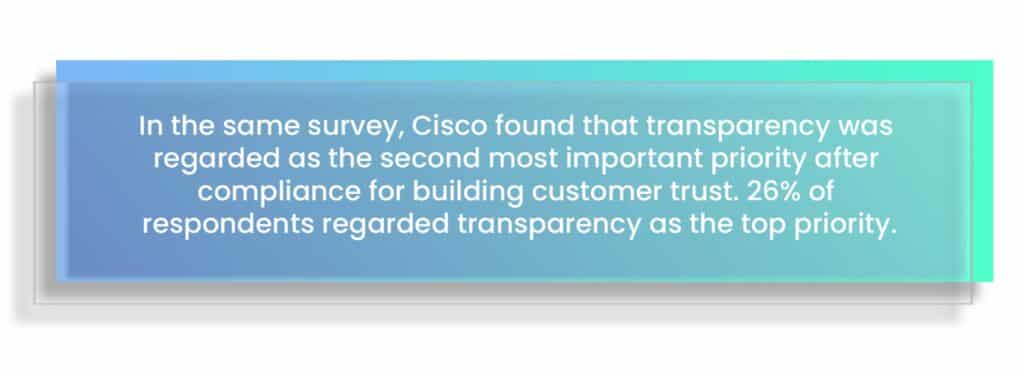
Obtaining customer consent and respecting their choices regarding data usage is crucial. Ensure that you obtain clear and informed consent from customers before collecting their data. This consent should be obtained through opt-in mechanisms that allow customers to make choices freely. Offer options for customers to opt out of certain data collection or marketing communications at any time. It’s essential to honor these choices promptly and make the process for doing so user-friendly.
In summary, transparent privacy policies and practices are integral to building trust with customers. By crafting clear policies, being transparent about data handling, and respecting customer choices, businesses can demonstrate their commitment to ethical data practices and ensure that customers feel in control of their personal information. This, in turn, fosters a sense of trust and confidence in the business.
Step 5: Establish a culture of compliance
A compliance-focused organizational culture is vital to build and increase customer trust. It signifies a commitment to ethical business practices and ensures that the organization operates within legal boundaries and industry regulations. Such a culture not only mitigates the risk of non-compliance but also demonstrates integrity and accountability to customers and stakeholders. It reinforces the message that data protection and ethical conduct are top priorities.
To establish a culture of compliance, organizations must invest in training and awareness programs for employees. These programs should educate employees about relevant regulations, industry standards, and internal policies. Employees should understand their roles and responsibilities in maintaining compliance. Regular training helps ensure that employees are up to date with the latest compliance requirements and data protection best practices. It also empowers them to identify and report potential compliance issues.
Scrut’s Employee Awareness module is designed to provide company-wide education on compliance and cybersecurity. It helps the organization to reduce cybersecurity risks and maintain regulatory compliance. Organizations can either use the programs offered by the company or customize their own modules. The managers can also keep an eye on the progress of each employee during the training. The module also assists the organization in testing the employees’ knowledge after they have completed the training to hold them accountable.
Following is an image of how the Scrut’s Employee Awareness module will look like:
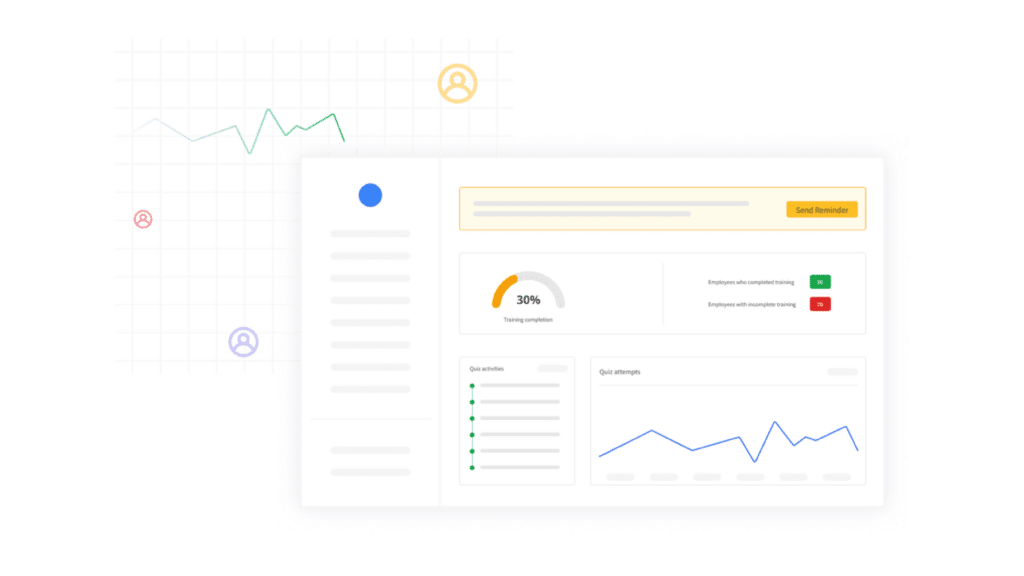
Encouraging employees to report compliance concerns is essential for early detection and resolution of potential issues. Establish clear channels for employees to report compliance-related problems, whether it’s through anonymous reporting systems, designated compliance officers, or open communication channels with management. Ensure that employees feel safe and protected when reporting concerns, and emphasize that reporting violations or suspected violations is a responsible and commendable action.
In summary, fostering a culture of compliance within the organization is a critical component of building and maintaining customer trust. It demonstrates a commitment to ethical conduct, empowers employees to uphold compliance standards, and provides mechanisms for identifying and addressing compliance concerns promptly. This culture reinforces the organization’s reputation for integrity and responsible business practices, enhancing customer trust in the process.
Winding up
In conclusion, customer trust is the bedrock of successful businesses. It’s not just a nice-to-have; it’s a must-have in today’s world. To establish and sustain this trust, businesses must first understand and respect the regulatory landscape that governs their industry. Compliance isn’t merely a checkbox; it’s a commitment to ethical conduct that resonates with customers.
Next, robust data protection measures are essential. Customers want to know that their sensitive information is secure. Implement encryption, access controls, and proactive breach prevention to show that you take data security seriously. Don’t forget the importance of educating your employees about these measures.
Regular security audits keep you ahead of potential threats and reassure customers that you’re vigilant in protecting their data. Transparency is key in your privacy policies and practices. Customers appreciate knowing what data you collect, how it’s used, and having a say in the matter.
Lastly, cultivate a culture of compliance within your organization. It’s not just about following rules; it’s about embodying ethics and accountability. When you do all of this consistently, you’re on the path to earning and keeping the trust of your customers, which is invaluable in today’s business landscape.
Ready to showcase your commitment to trust and compliance in real-time? Discover Scrut’s Trust Vault and elevate your business’s reputation today!
FAQs
1. Why is customer trust so important for businesses?
Customer trust is crucial because it forms the foundation for long-lasting customer relationships. When customers trust a company, they are more likely to make repeat purchases, provide positive reviews, and recommend the business to others. Trust also influences decision-making, as customers prefer companies they trust over competitors.
2. How do security and compliance contribute to building trust with customers?
Security and compliance are essential because they demonstrate a commitment to protecting customer data and adhering to relevant regulations. In an era marked by data breaches and privacy concerns, customers are vigilant about their data. When businesses prioritize security and compliance, it reassures customers and helps maintain their trust.
3. What are the key steps to increase customer trust outlined in the blog?
The blog outlines five essential steps to enhance customer trust: understanding the regulatory landscape, implementing robust data protection measures, conducting regular security audits, transparent privacy policies and practices, and establishing a culture of compliance within the organization.
4. Can you provide more information about Scrut’s Trust Vault and its role in building customer trust?
Scrut’s Trust Vault is a platform designed to help businesses showcase their commitment to trust and compliance in real-time. It offers features like real-time compliance monitoring, data protection measures, and transparency tools to reinforce customer trust by demonstrating compliance efforts.
5. What types of businesses can benefit from using Scrut’s Trust Vault?
Scrut’s Trust Vault is suitable for businesses of all sizes and industries that prioritize trust and compliance. Whether you’re in finance, healthcare, e-commerce, or any other sector, Trust Vault can help enhance your reputation and strengthen customer relationships.


















